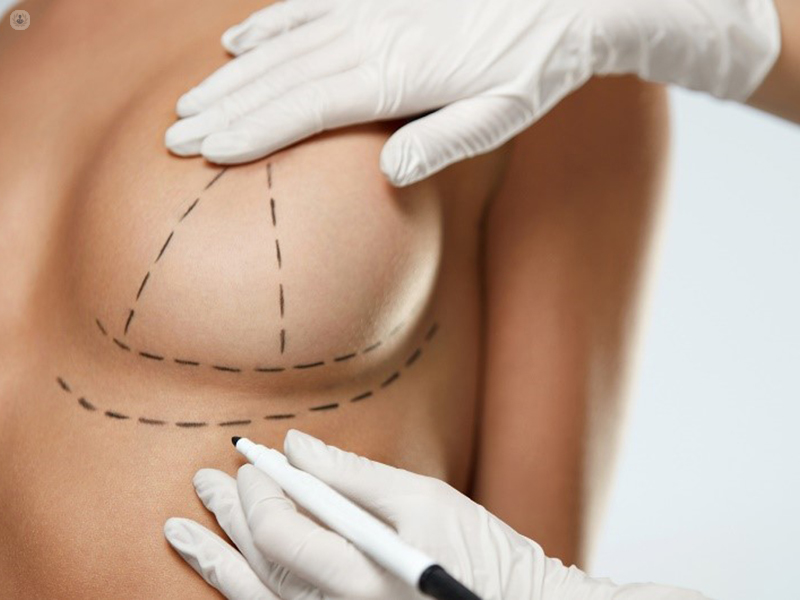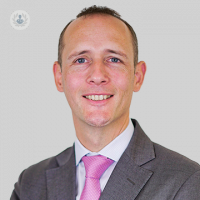Breast reconstruction and augmentation with your own body fat
Written by:After breast cancer treatment women may want to improve the appearance or the size of their breasts. Transferring fat from one part of the body to the breasts is one way of doing this. This is known as a fat transfer or fat grafting. Plastic surgeon Mr Kieran Power tells us about the benefits of breast augmentation and reconstruction with a fat transfer.

With regard to breast reconstruction, it’s a very useful technique to improve the appearance of the breast after a lumpectomy and radiotherapy. It can be used to fill out contour irregularities and release tethered scars.
Fat transfer also seems to have a rejuvenating effect on previously irradiated tissues. It can also be used to improve the soft tissue cover around breast implants and is often used to improve breast flap reconstructions by increasing volume and improving shape.
Fat transfer can also be used for breast augmentation and avoids the need for implants. It leads to a natural-looking augmentation in ladies seeking a moderate increase in volume without the “augmented look”. This process usually requires about two procedures.
What benefits does this method of breast augmentation have?
The main benefit of a fat transfer is that it avoids the need for implants and leads to a natural-looking soft breast. Unlike implants, revision surgery is not required in the future. It also has the added benefit of liposuction from another area of the body which can improve the appearance of the donor area.
Are there any disadvantages of a fat transfer in comparison to implants?
This technique cannot achieve the “augmented look” that some ladies want when undergoing breast augmentation. It’s most suited to ladies with small to moderate-sized breasts. It usually requires two procedures to achieve a moderate increase in volume.
While it is generally a low-risk procedure, there can be fibrous nodules and oil cysts which may need treatment. In rare cases, it can lead to difficulty interpreting breast cancer screening mammograms, which may result in a repeat scan or biopsy.
What is lipofilling?
Lipofilling, lipo-modelling, fat grafting and fat transfer are all terms used to describe the same procedure. Liposuction is performed to extract fat, usually from the abdomen or thighs. The fat is then washed and filtered in preparation for injection. The fat must be carefully injected in multiple planes in the breast so that it can survive until it acquires a blood supply.
Not all the injected fat will survive, and some will be reabsorbed by the body. At best, about 70% of the fat survives. It takes about three months to know how much of the fat has survived. The procedure is usually performed under general anaesthetic as a day case. If further fat grafting is necessary, it is usually performed three months after the initial procedure.
How long will the results of a breast fat transfer last?
As previously mentioned, it takes about three months to know how much of the grafted fat has survived. The increase in volume achieved at three months is usually retained in the longer term. The fat cells transferred will gain and lose weight as your body weight changes and the breasts will age naturally.
Would you like more information about a breast fat transfer? Then schedule a consultation with Mr Kieran Power.


